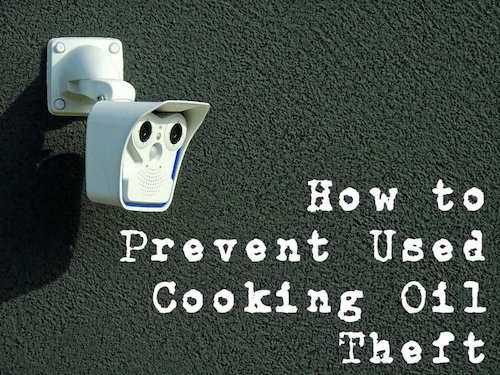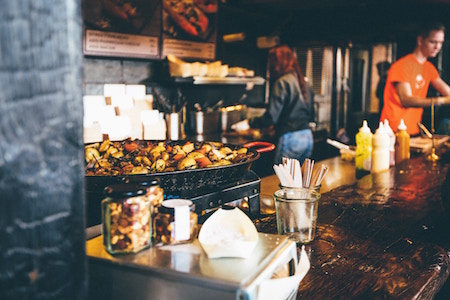
“Golden gunk” or “liquid gold” as it’s colloquially known is extremely valuable. It can be recycled and converted into so many useful things, including biodiesel. Biodiesel is one of the most efficient forms of renewable energy available today.
Because of its value, it’s no wonder that grease pundits plundered used cooking oil and kitchen grease from eateries worth millions in 2016.
Thieves sell the “liquid gold” either directly to biodiesel producers or to grease processing refineries. After it’s processed, the cooking oil is mostly used in two ways.
One, as a biodiesel/biofuel. Or two, in the production of many industrial and consumer products like animal feed and pet food.
According to reports from Bloomberg, almost four million pounds of used cooking oil were eventually turned into biodiesel per day in 2016. This surging demand for cooking oil can perhaps be attributed to the 2007 federal mandate which oil companies are required to comply with.
The 2007 federal mandate is a renewable fuel standard program created under the Energy Policy Act of 2005. It requires that a certain amount of renewable fuel be used to replace or reduce the quantity of petroleum-based oils.
Who Are Used Cooking Oil Thieves?
Disposing of used cooking oil isn’t a simple task. It is a difficult task and one that is time-consuming. This is because waste cooking oil is gross, gooey and rancid. Usually, restaurants use locked containers to store their used cooking oil.
The locked used cooking oil containers are then placed inside the kitchen or outside on the property. Licensed grease service providers hired to remove the used oil are then required to dispose of it.
Biodiesel producers are without a doubt the largest purchasers of used cooking oil. Besides biodiesel producers, used cooking oil can also be used for industrial or commercial purposes.

As already mentioned, the 2007 federal mandate requires that a certain threshold is met by oil companies. This can lure some oil companies to buy from anybody. That’s where unscrupulous buyers come in.
According to the U.S Department of Agriculture, in 2017, the benchmark cost of yellow grease ranged between $25 and $27.50 per 100 pounds.
This profit opportunity combined with the simplicity of stealing old fryer grease has produced cooking oil thieves. Grease bandits often target takeaways, restaurants, and supermarkets. In most cases, the thieves often have identification, paperwork, and uniforms almost identical to official contractors.
Preventing Used Cooking Oil Theft
- Have your staff employ best practices. Make sure that your staff knows the name of the used cooking oil recycling service you use. Also make sure they know how to safely use the used cooking oil containers, as well as how to keep them secure.
- Make sure that you check your oil levels frequently. Is it fluctuating between service visits?
- Use video surveillance. Install a camera system to keep an eye on your used cooking oil containers. You could even install a motion sensor light, which could help deter would-be bandits.
- Consider installing an alarm system that will warn you if the oil level drops suddenly.
- Install lockable fencing to screen tanks from view from the roads nearby.

- Get secure used cooking oil containers. Look for containers which have anti-tamper systems and built-in locks. When choosing your used cooking oil container, there are a number of things you need to consider:
- The amount of used cooking oil produced. Needless to say, the more oil produced, the larger the container should be. Choose one that works best for your volume and floor space.
- It’s almost impossible to carry large barrels or wheels up or down stairs. If your storage area can only be accessed by stairs, opt for a smaller container.
- Indoor containers are obviously the most secure. But if you have to place the containers outside, opt for lockable boxes.
- This is another thing that you need to consider. Different grease collection companies have different financing options.
- The location where you store the used cooking oil container should hide any potential unsightliness, minimize spills and streamline operations. Generally, the best location is in the trash corral.
Cooking oil theft results in lost revenue. Don’t let those thieves win! Use these tried-and-tested tips to keep your used cooking oil safe.